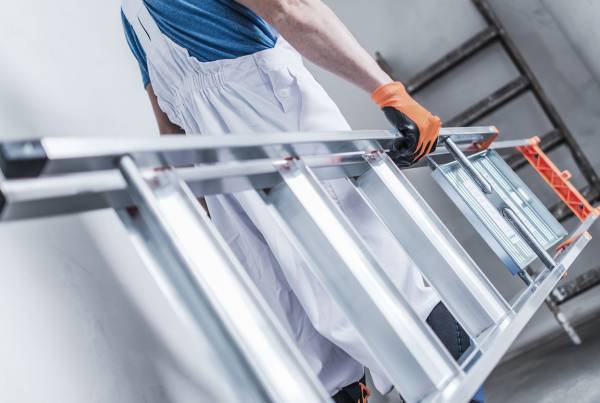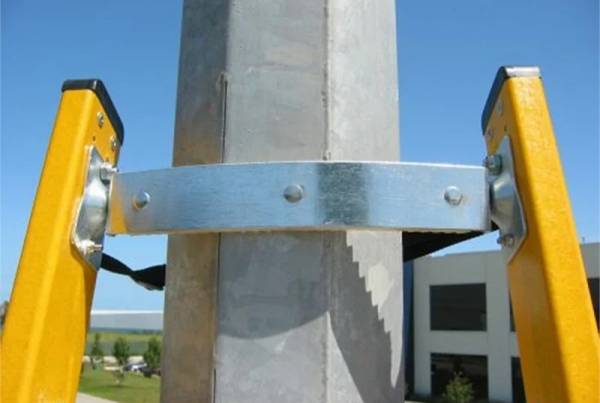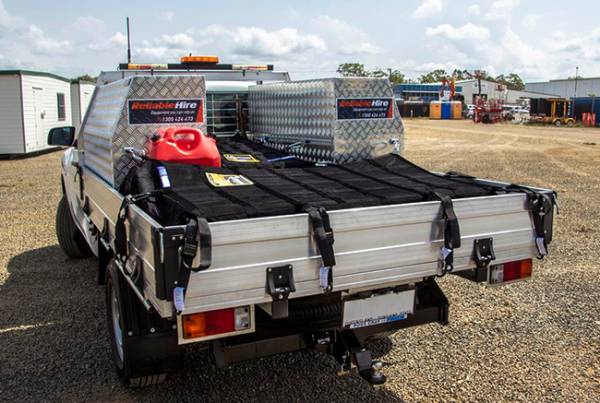When undertaking construction or maintenance work at height, safety must be your top most priority. Whether you’re a DIY enthusiast tackling a home improvement project or a seasoned construction professional handling large-scale operations, understanding the risks and following proper safety procedures is crucial. Both working at height and using ladders present risks, but with the right equipment and safety practices, these dangers can be significantly minimised.
At Vetner, our mission is to ensure that your work environment remains as safe and productive as possible. This comprehensive guide will cover essential safety tips for working at height and using ladders, providing you with practical advice to help avoid common hazards and maintain a secure work environment.
Safety First: Working at Height
Working at height introduces a range of potential hazards, whether you’re performing minor repairs at home or managing a major construction project. To eliminate these risks, proper planning and adherence to safety measures are essential.
1. Stay Informed About Safety Practices
The landscape of safety technology and procedures is constantly evolving. To ensure you are equipped with the most current safety measures, it’s crucial to stay informed through ongoing training and information sessions. Regularly updating your knowledge about the latest safety technologies and methodologies can prevent accidents and improve overall safety on site. Subscribing to industry newsletters, attending safety workshops, and participating in training sessions are excellent ways to stay current with best practices and safety regulations.
2. Use Proper Scaffolding and Equipment
The cornerstone of safety when working at height is having the right equipment. Proper scaffolding, trestles, and planks are essential for creating a stable and secure work environment. Invest in high-quality equipment to ensure safety and reliability. Skimping on costs for safety equipment can lead to severe consequences, including accidents and injuries. Always check that scaffolding is correctly assembled and that all components are in good condition before use.
Scaffolding Best Practices:
- Ensure all components of scaffolding are properly inspected before assembly.
- Use scaffolding that meets industry standards and load requirements.
- Secure scaffolding on level ground and check for stability regularly.
- Avoid overloading scaffolding beyond its intended capacity.
3. Never Cut Corners
The temptation to take shortcuts to save time or money can lead to dangerous situations. Cutting corners on safety measures is never acceptable. Inadequate inspection of equipment or improper scaffolding can result in catastrophic accidents. The construction industry has seen numerous avoidable accidents due to neglected safety practices. Prioritising thorough safety measures and following all recommended procedures is essential to protect yourself and your team.
Key Safety Measures:
- Conduct regular safety audits and inspections.
- Ensure all safety protocols are followed meticulously.
- Report and address any safety hazards immediately.
4. Maintain Full Awareness
Distractions can be a major cause of accidents at height. Always stay focused and alert while working on elevated surfaces. Avoid letting your mind wander or getting distracted by unrelated thoughts. Maintaining concentration is crucial for preventing falls and other injuries. Implement practices that help you stay engaged with the task at hand, such as setting specific goals and minimising interruptions.
Tips for Staying Alert:
- Use checklists to keep track of tasks and safety measures.
- Minimise distractions by keeping your workspace organised and free from unnecessary items.
- Take regular breaks to stay refreshed and focused.
Safe Ladder Usage: Essential Guidelines
Ladders are indispensable tools for accessing elevated areas, but they come with their own set of risks. Understanding and following ladder safety rules is vital for preventing accidents and ensuring a safe working environment.
Step Ladder Safety Tips
Step ladders are versatile and widely used but must be handled with care. Here are some essential safety guidelines:
- Ensure Proper Setup: Before using a step ladder, confirm that the spreader braces are securely locked and that the ladder is fully opened. This ensures stability during use and prevents the ladder from collapsing.
- Use on Level Ground: Always place step ladders on a stable, level surface. Avoid using them on uneven or sloping ground, as this can lead to tipping and accidents.
- Limit Height Use: Avoid climbing higher than the third step from the top, and never stand or sit on the very top rung. This helps maintain balance and reduces the risk of falls.
- Climb the Right Side: Step ladders are designed with a specific front and back. Always use the front side for climbing and avoid using the back side, which is not intended for climbing.
- Avoid Overloading: Do not stand on extra features like paint shelves or tool trays. These features are not designed to support weight and can cause instability.
- Close and Store Safely: After use, close the ladder and store it properly. Leaving it open can create tripping hazards, especially if children are around.
Additional Tips for Step Ladder Safety:
- Regularly inspect the ladder for signs of wear or damage.
- Ensure that all feet are in contact with the ground and are clean and dry.
- Use the ladder in well-lit areas to avoid accidents caused by poor visibility.
Extension Ladder Safety Tips
Extension ladders are essential for reaching high areas but require careful handling. Follow these safety rules to use extension ladders safely:
- Proper Setup: Place the ladder feet first against the wall and then raise the top part. Walk the base out to the correct angle, ensuring stability. This method helps prevent overbalancing.
- Angle and Height: To achieve the correct angle, place the base one-fourth of the ladder’s height away from the wall. For instance, if the ladder is 8 metres long, the base should be 2 metres from the wall.
- Avoid Slippery Surfaces: Never use an extension ladder on wet, muddy, or icy ground. Ensure the base is on firm, stable ground to prevent slipping.
- Use Proper Technique: Always face the ladder when climbing or descending, and keep both hands on the rungs. Use a tool belt to carry tools to keep your hands free and maintain balance.
- Have a Spotter: It’s beneficial to have someone at the base of the ladder to keep it steady while you work. This person can help ensure the ladder remains stable and secure.
Additional Tips for Extension Ladder Safety:
- Check the ladder’s rating to ensure it can support your weight and any additional load.
- Ensure that the ladder extends sufficiently beyond the edge of the surface for safe climbing.
- Avoid overreaching or leaning too far while on the ladder, as this can cause it to tip over.
Shop Aluminium Extension Ladders or Fibreglass Extension Ladders
Why Choose Vetner for Your Ladder and Height Safety Needs?
At Vetner, we are committed to providing high-quality equipment and expert advice to ensure your safety while working at height. Our extensive range of ladders, scaffolding, and safety gear is designed to meet the diverse needs of our customers. Whether you need step ladders, extension ladders, or scaffolding solutions, Vetner offers products that meet stringent safety standards and deliver reliability and performance.
Our Services Include:
- Expert Advice: Our knowledgeable staff can help you select the right equipment for your specific needs and provide guidance on best practices.
- High-Quality Products: We offer a wide range of ladders and safety equipment from trusted brands, ensuring durability and safety.
- Convenient Locations: Visit our stores in Brisbane, the Gold Coast, and the Sunshine Coast for personalised service and to view our product range.
For more information or to inquire about our products, contact Vetner today. Whether you need advice on safety procedures or assistance in choosing the right equipment, we are here to help. Your safety is our priority, and we are dedicated to ensuring you have the tools and knowledge needed for a safe and successful work experience.



